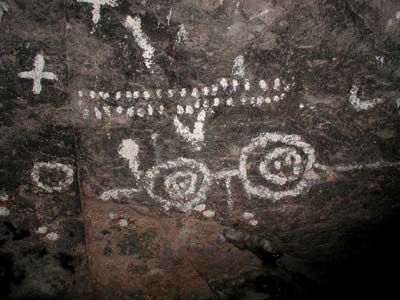
To demonstrate the demographic buying potential and market value of natural resource managers like park rangers, it's essential to understand their unique position within the workforce and consumer market. Natural resource managers, including park rangers, play a critical role in environmental stewardship and public land management, which often requires advanced education, specialized training, and a passion for conservation. This demographic typically consists of highly motivated professionals who are invested in preserving natural spaces. Their dedication to their career - and often outdoor lifestyle - makes them likely consumers of products related to sustainability, outdoor equipment, eco-friendly technologies, and specialized tools.

Park rangers and natural resource managers are key decision-makers when it comes to purchasing equipment and tools for their daily work in park management, wildlife protection, and outdoor education.
Photo courtesy of Dr. Jean K. Krejca, Zara Environmental LLC.
The buying potential of this demographic extends beyond personal needs and intersects with their professional responsibilities. Park rangers and natural resource managers are key decision-makers when it comes to purchasing equipment and tools for their daily work in park management, wildlife protection, and outdoor education. This includes everything from hiking gear, camping equipment, and all-terrain vehicles to specialized technology for conservation efforts, such as drones and GPS devices. Their position in managing large areas of land and resources often gives them influence over institutional purchasing decisions, increasing their value as a consumer base for companies offering relevant products.
In addition to their role in purchasing equipment, natural resource managers are often aligned with sustainable and eco-friendly brands. Their professional values around conservation and environmental protection often extend into their personal lives, where they seek out products that support sustainability, renewable energy, and ethical sourcing. This makes them prime targets for brands focused on outdoor recreation, green technology, and environmentally friendly products. Sponsorship of events, educational programs, or conservation initiatives could provide these brands with access to a consumer base deeply engaged with their mission.
From a market perspective, natural resource managers typically earn stable salaries that allow for discretionary spending on both personal and professional products. The U.S. Bureau of Labor Statistics reports that park rangers and related roles often have an income in the mid-range of $40,000 to $70,000 annually, depending on experience and location. This income level supports their ability to invest in high-quality products and services that enhance both their work and lifestyle. As they continue to climb the career ladder, their income and purchasing power grow, further boosting their value in the market.
Moreover, the market value of natural resource managers lies not just in their purchasing power but also in their potential as brand ambassadors. Park rangers and other natural resource managers are often seen as trustworthy and knowledgeable professionals by the general public. Their endorsement of specific products or services can lead to significant brand credibility, particularly in industries related to outdoor activities, environmental conservation, and sustainability. Partnering with natural resource managers can provide long-term value, as their connection to both the land and the community fosters an authentic and enduring brand relationship.

Image courtesy of Matt Bowers, ThirdMedia.com.
The official event schedule for the 2025 NCKMS has now been updated. Please check our schedule page or download a PDF to your mobile device.

The National Cave and Karst Research Institute (NCKRI) is a nexus of research, stewardship, outreach and information for caves and karst while fostering interdisciplinary collaborations, created by the US Congress in 1998 in partnership with the National Park Service, State of New Mexico, and the City of Carlsbad.
NCKRI is located in Carlsbad, NM, and is a research center of the New Mexico Institute of Mining and Technology.

Burrowed in the Toquima Range in the Humboldt-Toiyabe National Forest, Toquima Cave holds massive cultural importance to Native Americans. This sacred site was utilized by the Western Shoshone tribes as a temporary dwelling between 3,000 and 1,500 years ago.
A large number of pictographs adorn the north and south walls of the cave. As one of many pictograph sites in Nevada, Toquima Cave and the surrounding 40 acres were added to the National Register of Historic Places in 2002.